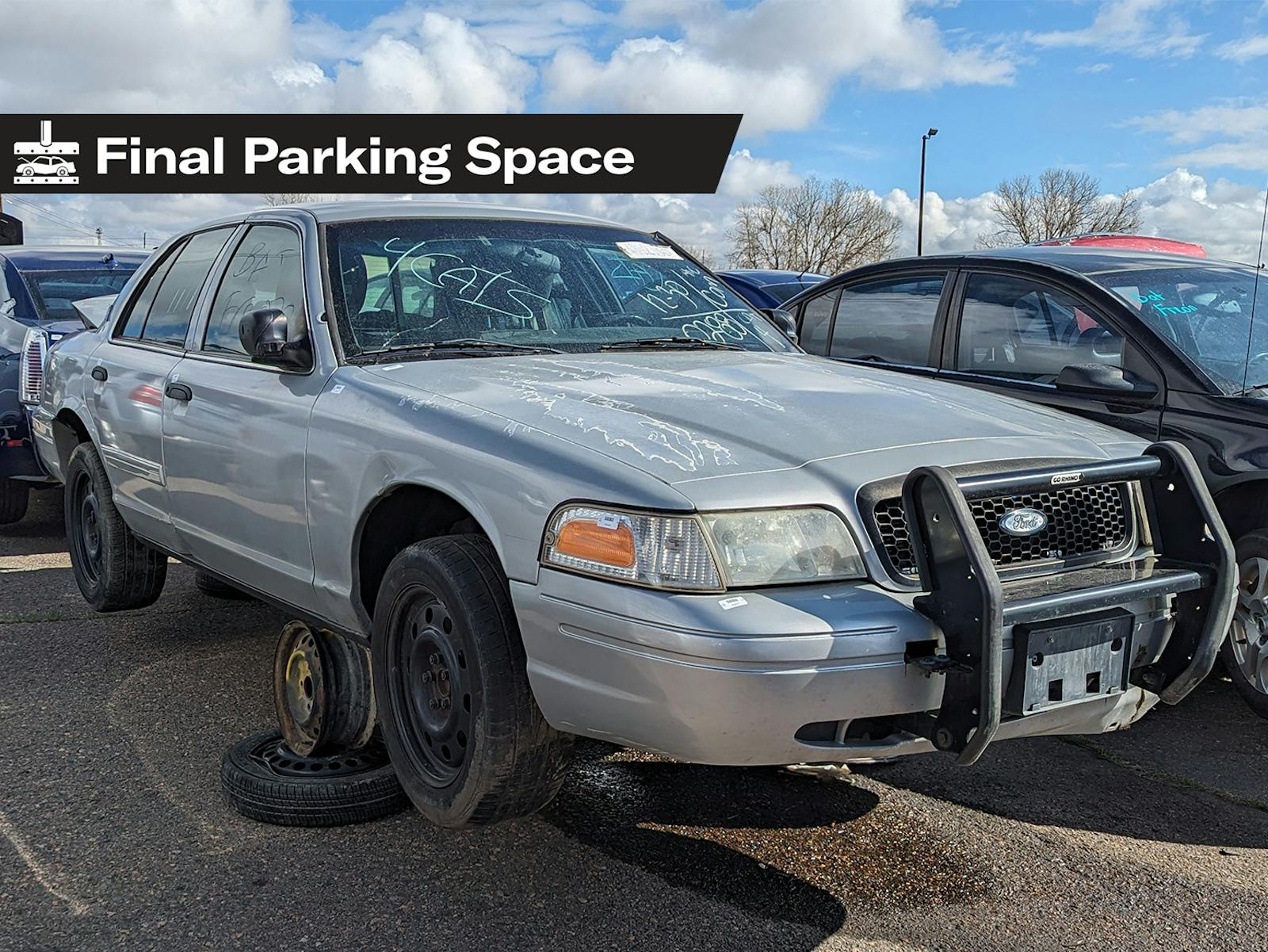1958 Packard Hardtop: Rare Relic in Rock Island and fintastic restored example in Hershey
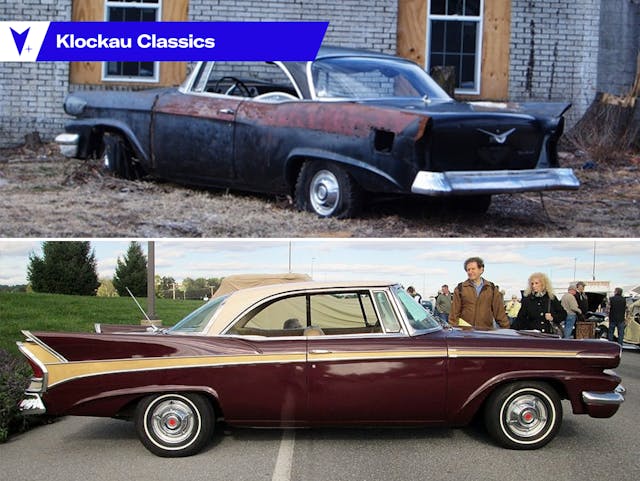
Packards from 1957 and ’58 are not really true Packards. Sure, they had Packard badging and were sold in Packard dealerships, but a series of poor decisions and lack of funds resulted in an unfortunate merger with Studebaker (a very long story, something I’ll perhaps touch upon at a later date) and what may be the very first badge-engineered car. The 1957 and ’58 Packards were meant to be a stopgap model until an all-new model could be introduced, a Packard worthy of the name. Sadly, it was not to be and the 1958 “Packardbakers” were the last of the line. It was a rather ignominious ending to one of the finest luxury car makers in the U.S. and arguably, the world.
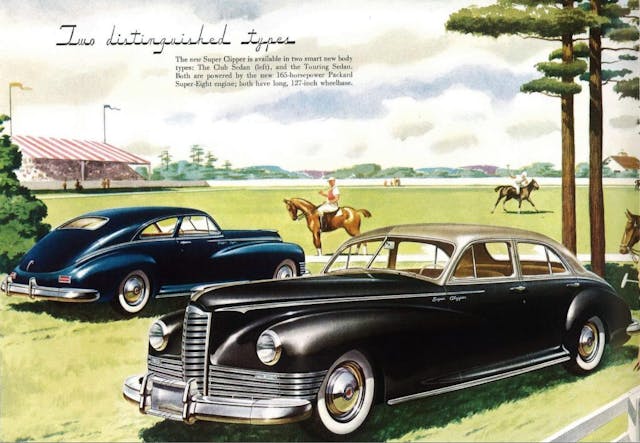
At the end of World War II, Packard was in very good shape. Lots of lucrative war contracts had left the company healthy, and it was eager to begin automobile production and continue its success in peacetime. Packard had one of the most modern-looking car designs, the 1942 Clipper, and even though the 1946 and ’47 models were little changed, they were very attractive and fresh for a prewar design.
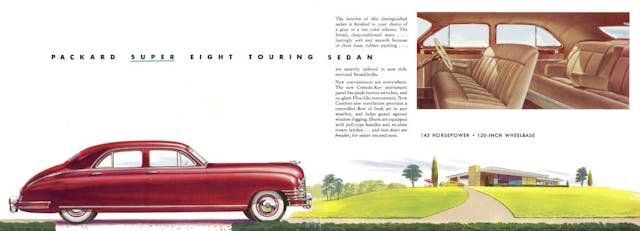
Then the ’48s came out. They basically took the ’47 and filled out the sides, resulting in a modern envelope-style body, but also looking rather, shall we say, fat. Not bad by any means, but folks didn’t exactly flock to them.
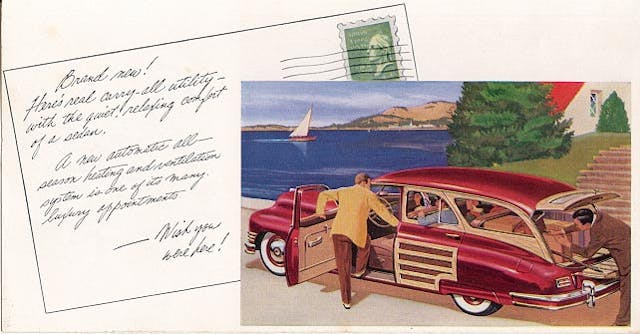
These Packards continued through 1950 with pretty minor changes. An interesting variant was a wood-trimmed Station Sedan that is very collectible these days. Perhaps the best-looking of the 1948–50 Packards.
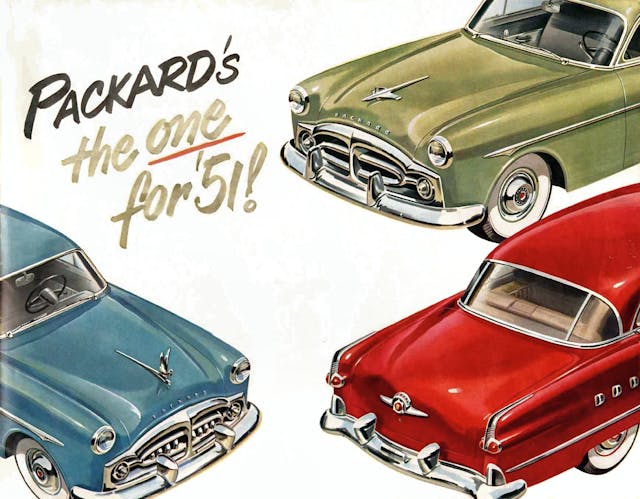
Redesigned “three-box” style Packards, designed by John Reinhart, came out in 1951 and were very modern looking and stately for the time. The 1951 250 Mayfair was Packard’s first hardtop coupe and the Caribbean custom convertible was introduced in 1953 and most attractive. But despite the new design and features, all Packards continued to use the old straight eight, at a time when OHV V-8s were all the rage. Many other medium-priced and luxury makes had V-8s by this time, and Packard was caught without one.

By 1954, Packard sales had been on a downward trajectory for a few years, and although the automaker was not in debt at the time, it was decided to merge with Studebaker Corporation. The thought was that with a broader product line and more factory space, Studebaker-Packard could cover a greater share of the market and better insulate themselves from the Big Three’s sales war of 1954. It’s a long and involved story, and many books have been written on the subject. Richard Langworth’s Studebaker 1946–1966: The Classic Postwar Years gives a good account of it. But in a nutshell, Studebaker was using some creative accounting, and Packard didn’t look hard enough at the books. The net result was Studebaker was able to go on for another 12 years or so, at Packard’s expense.
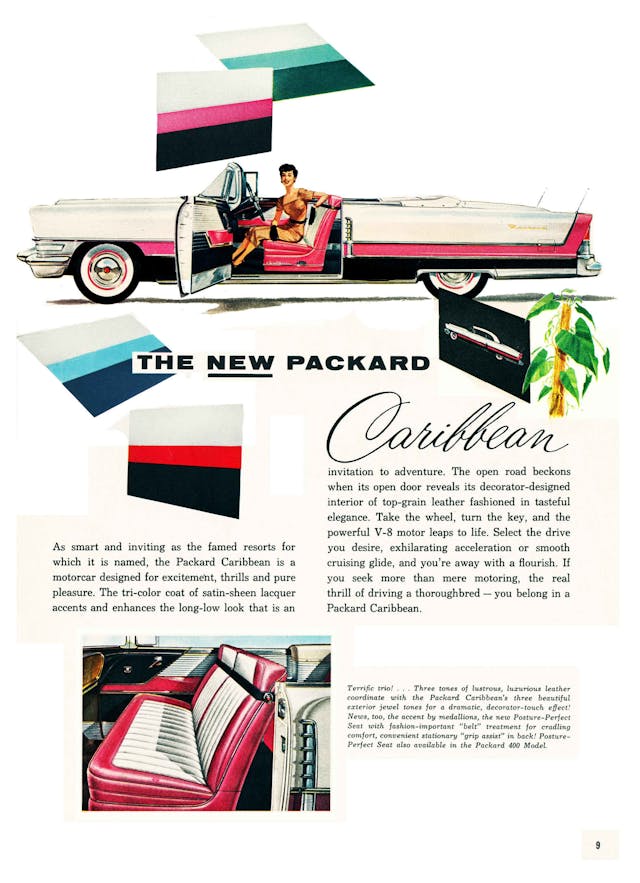
Despite all the trouble, a very heavy facelift of the 1951 bodyshell and new V-8 resulted in a very attractive Packard for 1955, the Caribbeans in particular. But rushed assembly led to very un-Packard like quality, and the resulting disaster turned off the last few loyal Packard buyers. In 1956, an agreement was reached with Curtiss-Wright to try to get the company back on solid ground. One of the conditions was the closure and sale of the Packard facility. Ultimately, the Detroit Packard factory, a hugely impressive facility that had been building cars since 1911, was shuttered in 1956 after 28,835 genuine Packards were produced for the model year. But Packard was not done yet. It may have been better if it was.
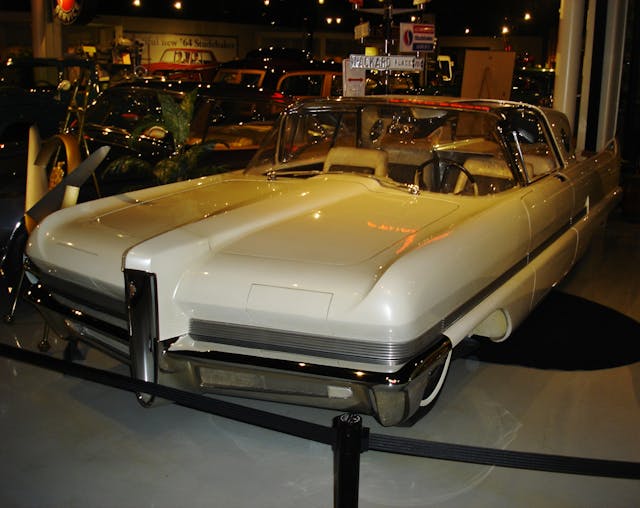
There were plans for an all-new 1957 Packard, based on the Predictor dream car. Many designs were drawn up and a running prototype was built. Sadly, funds were lacking and the whole project was unfeasible. Plan B was to purchase the tooling for the 1956 Lincoln from Ford Motor Company and restyle it into a Packard, but that fell through as well. As S-P intended to continue the Packard name, it was decided to issue a Packard based on the 1957 Studebaker President, their fanciest model at the time.
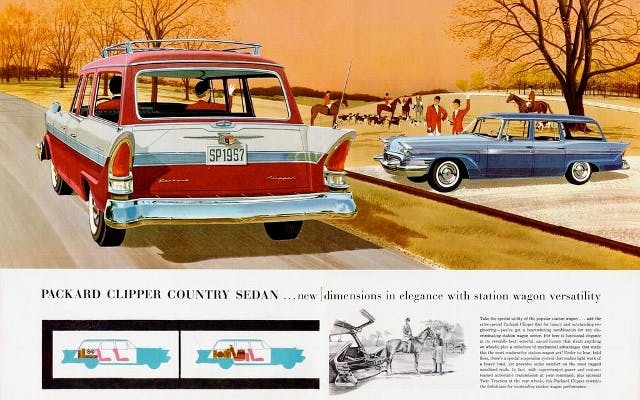
I don’t think anyone intended these to be a proper replacement for the 1955–56 models. The ’57 was actually fairly attractive, although clearly based on a Studebaker. It was available only as a Clipper, in sedan or wagon versions.
Every ’57 Packard was equipped with a 289 V-8 with McCulloch supercharger, good for 275 horsepower, the same engine used in Studebaker Golden Hawks. Despite the power and upgraded interiors, most people weren’t fooled and only 4809 were built. Then came the ’58 …
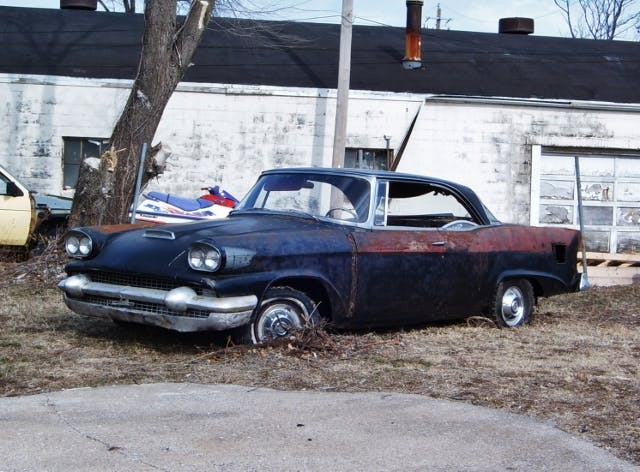
The 1958 Packard was one of the busiest designs of the ’50s. Due to lack of funds, fiberglass headlight pods and fins were tacked on to the largely carryover ’57 sheetmetal. The design of the 1958 was handled by Studebaker stylist Duncan McRae. I have no idea what he was thinking.
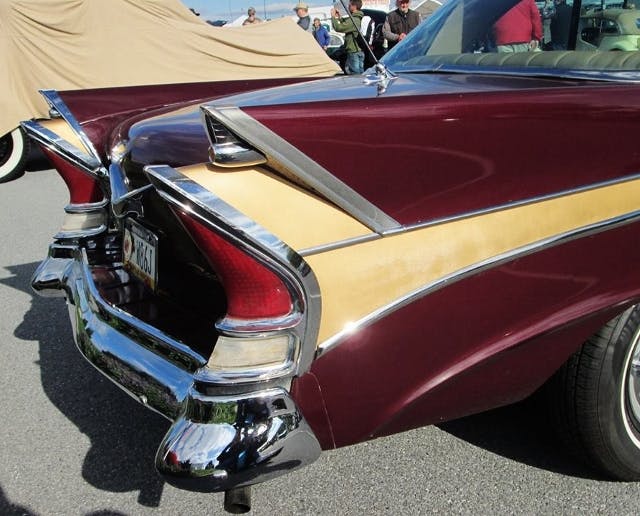
The wildest design feature was a fin-on-a-fin rear quarter design. While the 1957 Clipper had quite a few Packard design cues, and actually used ’56 Clipper taillights, the 1958 had no resemblance whatsoever.
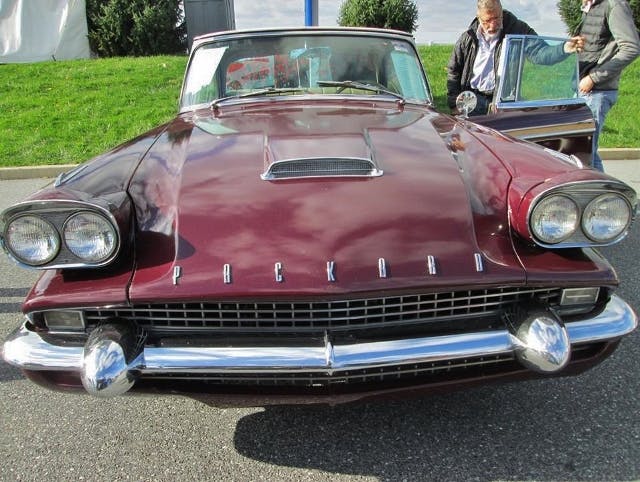
Quad headlights were new, as well as a two-door hardtop. While the Golden Hawk-based new-for-’58 Packard Hawk retained the 275-hp, supercharged engine, the “regular” Packard sedan, wagon, and hardtop used a normally-aspirated 225-hp 289.
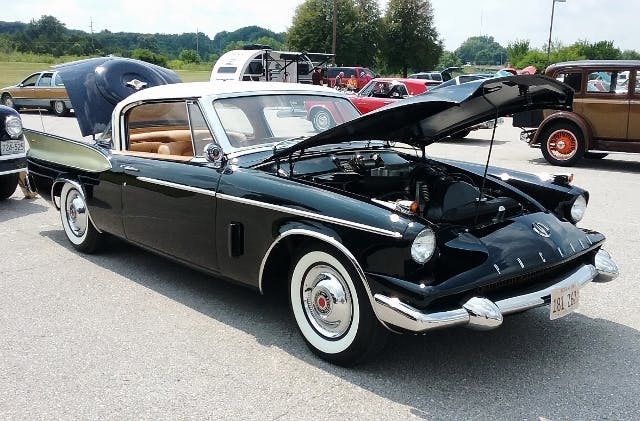
The 1958 Hawk was the only Packard with a model name, as the other three models were just plain Packards—not a good sign. Studebaker-Packard was in really bad shape by ’58, and the recession that year made a bad situation even worse. Packard sold a total of 2622 cars: 1200 sedans, 675 two-door hardtops, 588 Hawks, and a mere 159 station wagons.
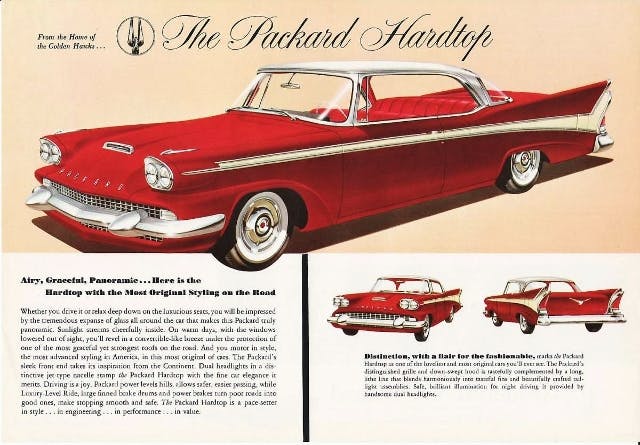
I’m sure it didn’t help when that rare ’58 Packard owner found himself sitting next to an ultra-basic Studebaker Scotsman at a stoplight, using the same basic body as his luxury Packard. After the train wreck of 1958, Studebaker decided to go in a completely different direction and modified the ’58 body shell to become the new compact ’59 Lark. With that, the Packard name was retired, although the corporation’s name remained Studebaker-Packard until 1962. A sad ending for a great marque.

I was pleasantly surprised to find this 1958 hardtop in downtown Rock Island, Illinois, way back in 2012, sitting next to a transmission shop. It’s hard to get a sense of the gaudiness these cars had, as this example is missing its chrome and gold mylar side trim, and three of its four fins.
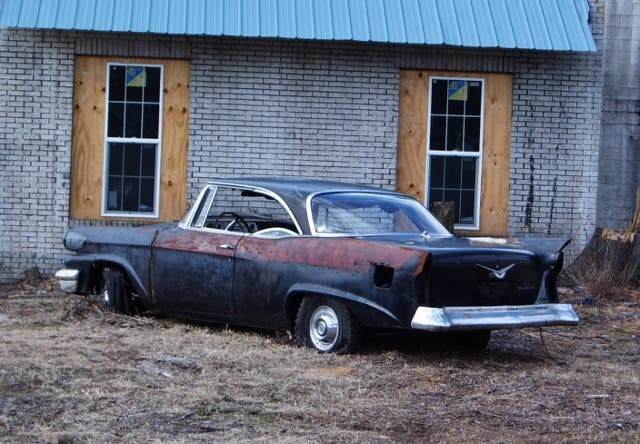
While I was taking the photos, a man driving by stopped and wanted to know what kind of car this was. It turns out that he knows the guy who owns this Packard, and hopes he gets it fixed up one of these days.
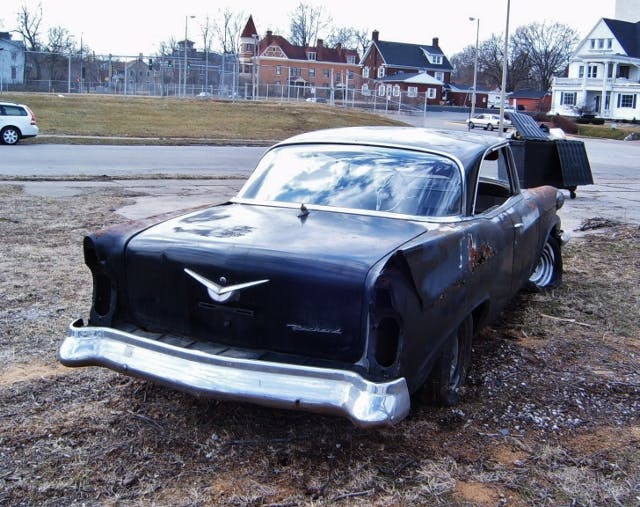
We talked Studebakers and Packards for a while, then went our separate ways. I hope the owner restores this too. It’s definitely not the grandest Packard ever built, but it is the last of its kind and worthy of being preserved. Good luck finding parts though.

I saw it again later, in the same spot, albeit somewhat changed.
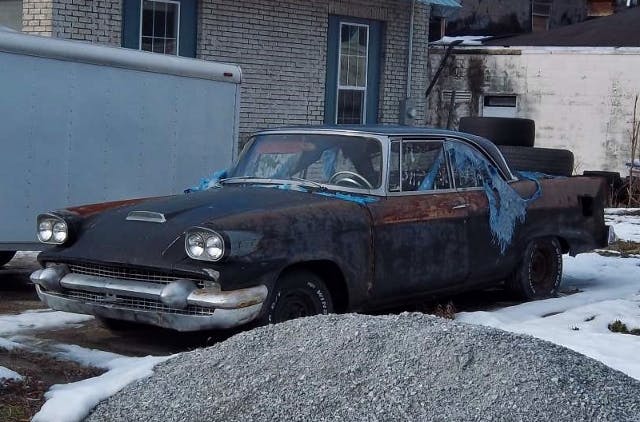
Our Midwestern super-storm during the winter of 2013 seemed to have shredded it quite neatly, giving me the opportunity to get a couple of shots. Good thing the windows are now up, since they weren’t when I first saw it in February 2012.
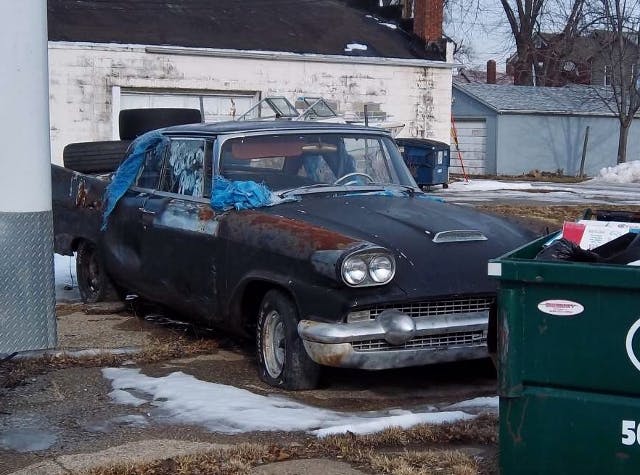
It appeared to have been kept sound. I hope it does get restored, or at least put on the road. A while later I was driving downtown and stopped to see if it was still there, but it was gone. Wonder if it has a new owner and is being enjoyed these days? I hope so.
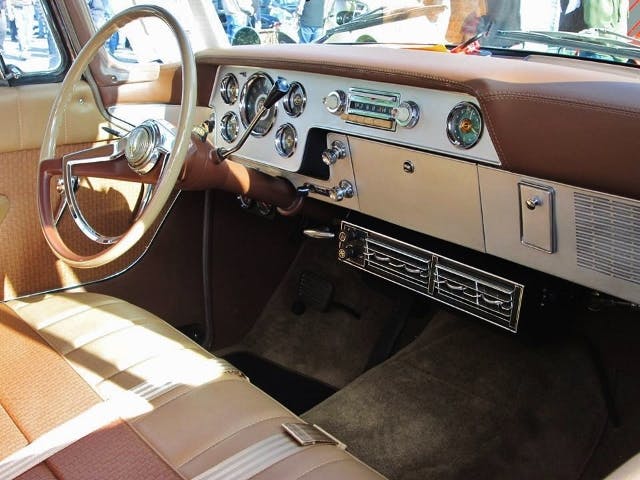
Final note: Special thanks to my pal Sal Darigo, Jr., in Harrisburg, Pennsylvania, for taking the pictures of the immaculately restored maroon ’58 that graces this post. It was so much nicer than the rough one I spotted in town. Sal, you’re a gentleman and a scholar.

